Do you want to travel to China but worry about the high cost? If you have this kind of worry, you might as well look at our cheap Beijing tours. On the trip, we will arrange the cheapest way to travel in China for you and help you enjoy the same attractions at the cheapest price! This trip will involve four famous tourist cities in China, including Beijing, Xi’an, Shanghai, and Chongqing, as well as a cheap Yangtze River cruise. We will visit the world-famous Great Wall, Forbidden City, Terra Cotta Warriors and Horses, Yangtze River, and other famous attractions! If you are interested in our cheap China tours, please join us as soon as possible!

Welcome to Beijing! Beijing has an area of 16410.54 square kilometers and a permanent population of more than 20 million. It is not only the capital of China but also an ancient city. The last two feudal monarchy dynasties of China, the Ming (1368-1644) and Qing (1636-1912) dynasties, both established their capital here during 600 years. Therefore, Beijing is one of the best cities for domestic and foreign tourists to understand China. Our tour guide holding your name card will wait for you at the airport in advance. After picking you up, he will escort you to the hotel. In our journey, you can enjoy a lower price with the same service! I hope you can adjust the jet lag as soon as possible, and we will start our trip to Beijing tomorrow!
How was your rest last night? Hope you are feeling good! Today, we will visit Beijing! The first attraction we will head to is Tian’anmen Square. For Chinese people, the place they cannot miss when they go to Beijing is the square. Many Chinese people from all over the country travel long distances just to come here. Tian’anmen was the main gate of the imperial city during the Ming and Qing dynasties. At that time, in front of Tiananmen Square was the front yard of the palace. After the founding of the People’s Republic of China in 1949, the government gradually carried out several large-scale repairs. Today, the square has become the largest square in the world, with an area equivalent to 4 Russian Red Squares. After you come here, you can take photos. The Monument to the People’s Heroes, the Great Hall of the People, and the National Museum of China are all good places to take photos!
After visiting Tiananmen Square, we will head to the Forbidden City (closed each Monday), the imperial palace of China during the Ming and Qing Dynasties. As the royal palace of the two dynasties, all kinds of Chinese treasures during 600 years are gathered here, and every cultural relic here is extremely valuable. In the face of so many treasures, some people may inevitably want to steal them. There was once a treasure robbery case that shocked the world. At around 22:30 on May 8, 2011, staff found a suspicious man in the courtyard. When the staff asked the man to squat on the ground and turn around to report the situation to the police, the suspicious man ran away suddenly. That night, all duty personnel, and armed police conducted a one-night search but found nothing. Later, when the staff of the museum inspected the cultural relics, they found that 9 cultural relics had been stolen. Of course, under the chase of police, the thief was quickly arrested.
Next, we will go to Jingshan Park, the imperial garden of the Ming and Qing dynasties. Jingshan mountain in the center of the park was piled up by people, and it was once the highest point in the city. Today the park has become a good place for residents in Beijing to relax and entertain. After coming here, you can not only see many people dance in the
square, but also many old men who are “walking the birds”. You can probably only see these ways of relaxing in China! If you are interested in this, you might as well join them and dance! In addition, you can also stay away from the noisy crowd and find a quiet place to rest and enjoy your leisure time here.
After visiting Jingshan Park, we will head to the Summer Palace. The predecessor of the Summer Palace was the Qingyi Garden built by Emperor Qianlong. At that time, Emperor Qianlong found two reasonable and touching reasons when building the garden: one was to clean up the flood, and the other was to honor his mother. But in fact, this is just an excuse. It is said that Emperor Qianlong once visited the south of the Yangtze River six times just to appreciate the beauty of it. So, he moved the West Lake (a famous lake in the south of the Yangtze River) in there to Beijing on the pretext of wishing his mother a birthday. Therefore, after coming to the Summer Palace, you must tour the lake where even the emperor was fascinated by it. After the tour, our tour guide will send you back to the hotel. Please take a good rest and save your energy for tomorrow’s trip!

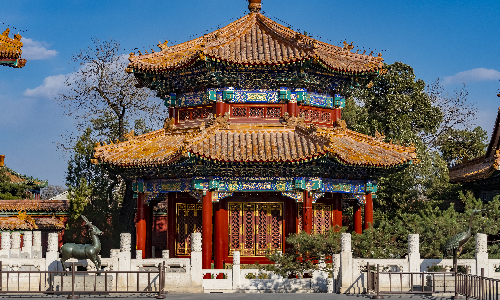
Today we will go to a mausoleum of emperors, the Ming Tombs, and visit Ding Tomb. The Ming Tombs is 50 kilometers northwest of Beijing, and it takes about an hour and a half to drive. From 1409 until the last emperor of the Ming Dynasty was buried in Si Tomb, for more than 230 years, 13 emperors were buried in Ming Tombs. The Ding Tomb we are going to visit is the tomb of the famous Emperor Zhu Yijun. Besides, Ding Tomb was the first imperial tomb excavated after the founding of the People’s Republic of China, and many strange things happened during the excavation. Legend has it that before the death of Emperor Zhu Yijun, he had a dream in which the god of fire said to him: “You are mediocre, and I am ordered by the Jade Emperor (the supreme god in China) to burn your tomb!” After that, Emperor Zhu Yijun died. After he was buried, a white circle appeared on his tombstone, which gleamed at night. People say that it was the emperor’s eyes staring at the god of fire to prevent him from burning the tomb. But one cloudy night, the god of fire still succeeded. Since then, Ding Tomb has experienced many fires, and the eyes on the stele have not to gleam anymore.
We are going to climb the Great Wall this afternoon! What we will head to is the Mutianyu Great Wall, which is 74 kilometers north of Beijing. It takes about two and a half hours to drive. According to legend, when the Mutianyu Great Wall was built, workers were thirsty and hungry. And the area was full of apricot trees planted by farmers. So, they often stole apricots for eating, which made the farmers making a living by planting apricot trees complaint. Therefore, they prayed to the god, hoping to find a way out. Finally, one day a scholar came to the village and warned the farmers that it is better to plant apricot trees than to farm. After some discussions, the villagers agreed to this opinion and changed the name of the village to Mutianyu (the pronunciation of “Mutianyu” and “farm” in Chinese is similar). When you walk on the Great Wall, with the breeze blowing, you can see the endless mountains in the distance. At that moment, I believe you will feel the majesty of the Great Wall and the difficulty of building the Great Wall more than two thousand years ago. After the tour, our guide will send you back to the hotel.
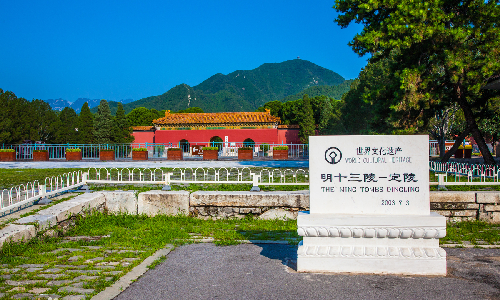
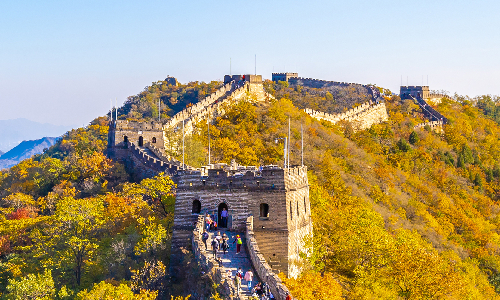
 Xi'an
Xi'an Today we will go to the Temple of Heaven. The Temple of Heaven was built in the 18th year of Yongle in the Ming Dynasty (1420), covering an area of about 2.73 million square meters. In the Ming and Qing dynasties, it was a place where emperors worshipped the emperor and prayed for grains. In the temple, there is a place called the Echo Wall, which is very magical. The wall, with about 3.72 meters high and 0.9 meters thick, is a circular wall around a palace in the Temple of Heaven. Because the wall is round and very smooth, it can echo sound waves. So, when people stand near the wall and talk softly, although the two sides are far apart, they can hear each other very clearly. If you come here with your family or friends, you must feel this magical phenomenon!
After visiting the Temple of Heaven, we will head to a street full of Beijing characteristics, Hutong. Hutong refers to the relatively small streets between the main streets in towns or villages, leading to the interior of residential areas. The Hutong we will go to is located near Shichahai, a place where people in Beijing gather for activities. There are thousands of hutongs in Beijing, formed in the three dynasties of the Yuan, Ming, and Qing dynasties in Chinese history, most of which were formed in the Yuan dynasty (1271-1368) in the 13th century. The direction of the hutong is mostly east to west, and the width is generally only nine meters. Most of the buildings on both sides of the hutong are Siheyuan, a building surrounded by four houses in a square symmetrical form. Large and small Siheyuan are lined up next to each other, and the passage between them is the Hutong. Therefore, visiting the Hutong is also the best way to quickly understand the life of people in Beijing. In addition, we also arranged a Rickshaw for you, which is a traditional transportation tool in Beijing, and Rickshaw drivers are used to driving passengers through the alleys. In addition, we can also visit a place in the hutong, where you can see what the homes of ordinary residents in Beijing are like!
In the afternoon, we will head to Silk Street Market. There is a saying in Beijing: After foreigners come, they must climb the Great Wall, visit the Forbidden City, eat roast duck, and visit Silk Street Market. The market, along with the “Beijing Symbols” such as the Great Wall, Forbidden City, and Roast Duck, has become a landmark for many tourists from home and abroad. Fine clothing, silk, pearls, porcelain, tea, handicrafts, and Chinese food including roast duck are popular with consumers all over the world. In 2008, former US President George W. Bush and his daughter visited Silk Street together. After they arrived, they went straight to the third floor and picked 6 hand-embroidered nightgowns. It shows how popular goods in the market are!
After the tour, we will take the estimated train T231 18:35/07:36+1 to Xi’an. Because we need to take the train for one night, we can help you save the fee for sleeping in the hotel! In addition, what we arrange for you is the most advanced soft sleeper. This kind of room is not like a hard sleeper room with six people living there, but only four people. Moreover, each box of this kind of room has a door, which can better protect your privacy.

Today we will arrive in Xi’an! As one of the most famous ancient capitals, Xi’an has an area of 10,108 square kilometers and a population of over 12 million. Besides, it was also the capital of 13 dynasties. I wonder if you have ever thought about what the first dynasty was among so many dynasties in China? In fact, China’s first dynasty, the Qin Dynasty (221 BC-207 AD), was near Xi’an. And the first attraction we are going to visit is the Terra Cotta Warriors and Horses Museum, the tomb of the first emperor of the Qin Dynasty. The Terra Cotta Warriors are located 43 kilometers northeast of Xi'an, and it takes about 40 minutes by car. When you come here, you will see many clay figures, horses, and chariots. Among them, pottery figurines are the most exquisite. The figurines are divided into two categories: soldiers and military officials. General soldiers do not wear crowns, while military officials wear crowns. Besides, the warriors include infantry, cavalry, and chariot soldiers. What’s more amazing is that so many pottery figurines are all different in face shape, body shape, expression, eyebrows, and age!
In the afternoon, we will head to the landmark of Xi’an, the Big Wild Goose Pagoda. The pagoda was built in 652 by the eminent monk Xuanzang to preserve the scripture Buddha statues he brought back to Xi’an. It has a total height of 64.7 meters, with a total of seven floors. Among them, the second floor of the pagoda enshrines a gilt bronze statue of Sakyamuni, which is a precious cultural relic in the early Ming Dynasty. On both sides of the pagoda walls, there are two murals of Buddha as well as several modern celebrity calligraphies, most of which are poems expressed by poets of the Tang Dynasty when they visited here. You must not miss them!
After visiting the Big Wild Goose Pagoda, we will head to the Great Mosque. The mosque was built in 742, with a total area of 13,000 square meters and a construction area of about 6,000 square meters. The architectural form was based on the Chinese ethnic style. However, all the layouts in the temple are in accordance with the Islamic system. The carvings and arabesque decorations in the temple are composed of Arabic carvings, traditional Chinese architecture, and Islamic architectural art. The combination of style and craftsmanship is so impressive that it is listed as one of the world’s Islamic cultural relics by UNESCO.
After visiting the Great Mosque, we will head to the Muslim’s Quarter, one of the places full of delicious foods in Xi’an! Among the countless specialty snacks, you can try Jia San soup dumplings first. The soup dumpling is a traditional snack in Xi’an. This kind of dumplings are made with the beef bone marrow soup in the stuffing and then be steamed. When you bite it down, the soup in it will spread out in your mouth, filling your mouth with the deliciousness of beef bone soup. I believe that after you have eaten the dumplings here, you will never want to eat other dumplings again!
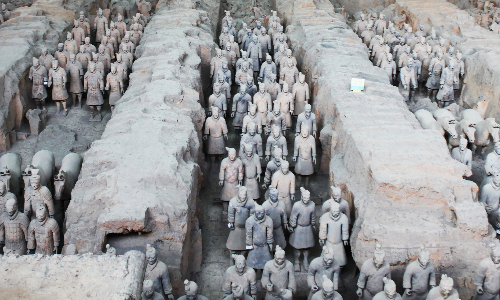
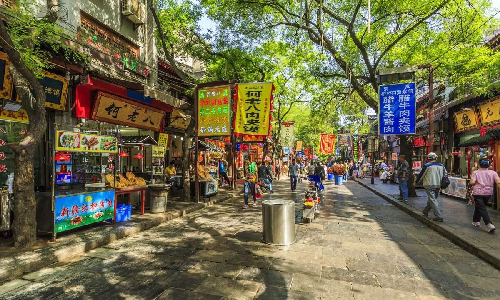
 Chongqing
Chongqing Yangtze River Cruise
Yangtze River Cruise Today we will leave Xi'an and head to the next city, Chongqing. You will take the estimated train D1971 09:05/13:42 to Chongqing. Our guide will pick you up at the train station and escort you to Chaotianmen Dock to board the cruise ship. The cruise ship will sail at around nine in the evening, and then you can embark on a three-day cruise on the Yangtze River! Dinner is not included on the cruise, so you may need to prepare some food in advance. Of course, our cruise will be more money-saving in comparison!
How was your sleep on the cruise ship last night? After waking up, you can participate in Tai Chi exercises with the tourists on the cruise ship in the morning. This morning we will go ashore to take a Shore excursion-Fengdu “Jade Emperor”. The Jade Emperor is the supreme god in ancient Chinese mythology. And the attraction we will head to is located on Wuyu Mountain, a famous ghost mountain in the world. Legend says that in the Han Dynasty (202-220), a Taoist named Wang Fangping was keen to find a way to become a god. After countless days of asceticism, finally, he became the king of ghosts. After that, he was respected by the people as the Fengdu “Jade Emperor”. If you want to tour the palace of the king, you could come here and visit. In addition, if you want to learn more about Fengdu, you can also participate in Additional Shore excursion-Fengdu "Ghost City" (this item requires additional payment). After the tour, we will go to have a buffet lunch.
We will not arrange activities this afternoon, so you are free to wander around! But be sure to return to the cruise ship in time before the evening, where we will hold the Captain's Welcome Reception! You can enjoy the buffet dinner on board and the last night on the cruise ship! In addition, you can also have the Additional Shore excursion-FengYan SanGuo "Romance of the Three Kingdoms" Show (this item requires additional payment).
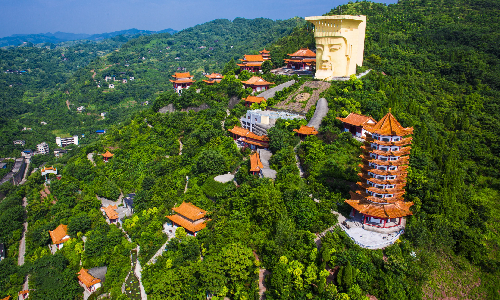
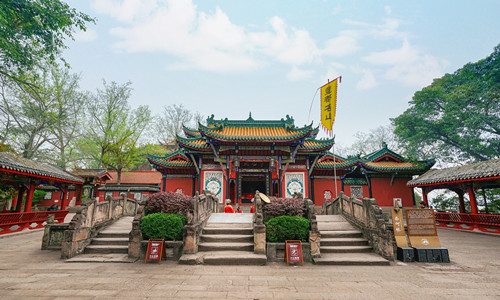
After getting up today, you can still participate in Tai Chi exercises! In the morning, if you need, you can choose to go ashore to take an Additional Shore excursion-White Emperor City (this project requires an additional fee). In addition, we will pass through two famous gorges, Qutang Gorge and Wu Gorge. And there is a goddess peak in Wu Gorge, a story related to it has been circulating for hundreds of years: The daughter of Emperor Yan (the god of medicine in Chinese legends), Yao Ji, was the most beautiful, fashionable, and affectionate among her sisters, but she fell ill because of her sentimentality and eventually died. With her body buried in Wuxia, she turned into a kind of magical grass. It is said that if a woman consumes this kind of grass, she will become attractive.
Today’s lunch is still a buffet. After lunch, we will take boats to have a Shore excursion-Goddess Stream. The stream is located on the south bank of the Yangtze River, 15 kilometers long, 10 kilometers of which are inaccessible primitive valleys. It has another name called Mountain and River Gallery because every scene here is picturesque. When you take a boat in the stream, you will see virgin forests and mountains with lush trees on both sides, and emerald green streams nearby. At this moment, I believe you will feel like being in a gallery too!
Tonight, the captain will prepare a Captain's Farewell Banquet for you, so you can enjoy your last night on the cruise ship!
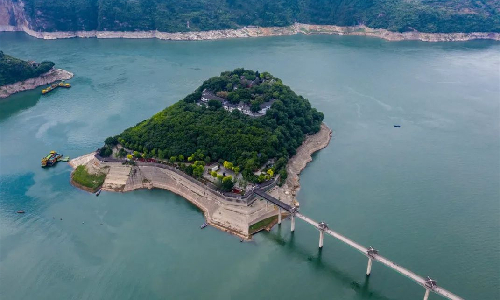

 Yichang
Yichang Shanghai
Shanghai This morning we will have a Shore excursion-Three Gorges Dam Site. The dam is 181 meters high and 2,335 meters long, making it the largest hydroelectric power generation project. And such a huge dam has also made a lot of contribution to the power supply of China. The water level of the reservoir behind the dam is nearly 60 floors high, and the water rushing down to the generator from such a high height will generate huge energy. The Three Gorges Dam generates 84.7 billion kilowatt-hours of electricity per year. Compared with thermal power, the Three Gorges Dam is equivalent to 10 large coal mines with a capacity of 5 million tons. After visiting the Three Gorges Dam, you can also participate in Additional Shore excursion-Board sightseeing-ferry sailing through TGP Ship's elevator (this item requires additional payment). The ship’s elevator refers to a kind of “navigable structure” set up for ships to pass the water level drop on the channel, which can help the ship to rise or descend on the river with huge height drop like the Three Gorges.
After the tour, you will take the shuttle bus to Yichang Three Gorges Center Cruise Terminal, where our tour guide will pick you up and escort you to the train station. After arriving, you will take the estimated train Z258 19:33/09:06+1 to Shanghai. Don’t worry about Shanghai’s high housing prices, and we will still spend tonight in a comfortable soft sleeper!
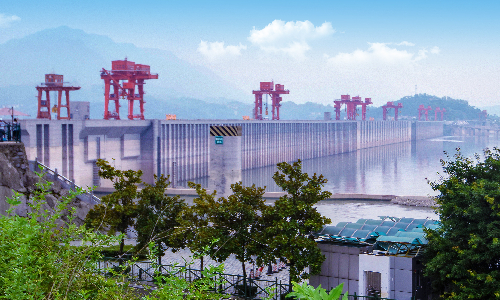

How was your sleep on the train? After the train arrives, our guide will pick you up and take you to breakfast. After breakfast, we will head to the Jade Buddha Temple. The Jade Buddha Temple is in the prosperous urban area of Shanghai. It is named after the temple mainly enshrines Jade Buddha. In this temple, you may see many cute cats, and this is the famous orange cat, which are stray cats that live in the monastery. Although the temple does not keep pets, the masters are compassionate and do not deliberately drive away from the stray animals that come to the monastery. Many people believe that these cats have been in the temple for a long time, so they also have an aura. If you encounter them, you may as well touch them, which may bring you good luck!
After visiting the Jade Buddha Temple, we will head to Yu Garden (closed each Monday). Yu Garden, built in the Ming Dynasty and covers an area of more than 20,000 square meters, is a classical garden in the south of the Yangtze River. There are two famous iron lions in here. These lions were cast in the Yuan Dynasty and has a history of more than 700 years. On the left is the male lion and on the right is the female. The male lion steps on a hydrangea, symbolizing power and majesty. While the female lion treads on the cub, symbolizing the extension of the offspring.
After visiting Yu Garden, we will head to Shanghai Old Street. Walking into Shanghai Old Street, you may feel like returning to the bustling market of Shanghai 100 years ago, and the thing that cannot be missed here is the food! I suggest you try the soup dumplings, small steamed bun, and qingtuan. Soup dumplings and small steamed bun are both traditional Chinese delicacies, steamed buns. But the difference is that there is a lot of soup in the former, and your whole mouth will be filled with soup after a bite! In addition, you can also try the qingtuan. Qingtuan is a traditional specialty snack in the south of the Yangtze River. It is green, mixed with wormwood juice into glutinous rice flour, and then wrapped in bean paste or lotus paste. It is not too sweet or greasy but has a light but delicious taste.
After lunch, we will head to the Oriental Pearl TV Tower. The tower was built on October 1, 1994, and it is the tallest tower in Asia and the third tallest in the world. The tower looks like a rocket as if it could be launched into the air at any time. As a high tower, this is one of the best places to overlook Shanghai. Many tourist groups will go to Shanghai Center to ascend, but the cost of Shanghai Center is relatively high. Going to the Oriental Pearl Tower can see the same beautiful scenery, and the cost is relatively low.
After visiting the Oriental Pearl TV Tower, we will head to the Bund. The Bund is located by the Huangpu River. Because it was once a British concession, the architectural style here is also very different from the traditional Chinese one. The HSBC Building on the Bund is the building with the widest facade and area as well as the largest volume, and the giant mosaic mural on the crest of the entrance hall is worth seeing. The lower half of the hall is made up of 8 round-arched door holes, and 16 Greek-style figures are inlaid on the shoulders of the round arches. The eight main panels above the archway represent the financial centers of the East and the West, and their symbols are the eight banks of HSBC in London, New York, Tokyo, Shanghai, Hong Kong, Paris, Bangkok, and Kolkata. Besides, the subject of each mural is a goddess in different costumes and meanings.
Finally, we will go to Nanjing Road. With a total length of 5.5 kilometers, Nanjing Road is the first commercial street established in Shanghai after the opening of a port. Due to its long history, there are also many traditional Chinese craftsmanships here. The most famous one is Zhang Xiaoquan scissors. The Zhang Xiaoquan brand became famous in 1628 and is the only well-known trademark in China in the scissors industry. For more than three hundred years, the successors of Zhang Xiaoquan have abided by the ancestral motto of “good steel and fine work” and worked well. The products of the brand have been widely recognized by Chinese consumers for their excellent quality and sincere service. On average, every two people in China own Zhang Xiaoquan scissors. Maybe you can also buy a pair of scissors to take home and feel the traditional scissors made in China! After the tour, our guide will send you back to the hotel.
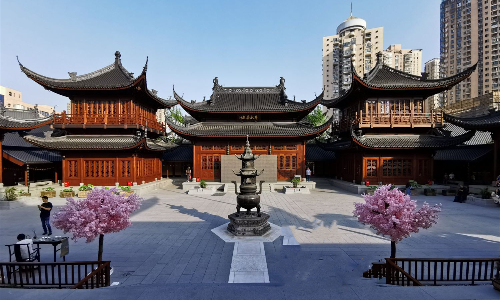
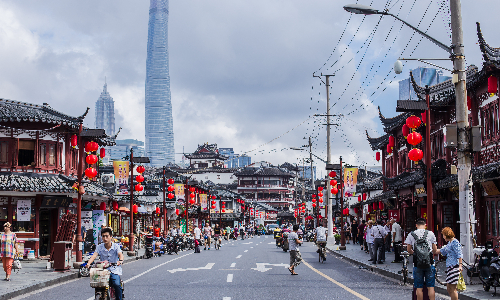
Today our eleven-day trip to China is over. Our tour guide will drop off the plane according to your flight time. Hope to see you again!
Author: Zhang Ziyang
| City | Five Star hotel list | Four Star hotel list |
|---|---|---|
| Beijing | Sunworld Dynasty Hotel Beijing Wangfujing | Sunworld Hotel Wangfujing |
| Xi'an | Tianyu Gloria Grand Hotel Xi'an | Sunworld Dynasty Hotel |
| Yangtze River Cruise | Victoria Anna | Victoria Anna |
| Shanghai | Ocean Hotel Shanghai | Courtyard by Marriott Shanghai Central |
 |
![]() About your child or infant, please contact us for a discounted price.
About your child or infant, please contact us for a discounted price.



We started with a few days in Beijing & ended in Shanghai, from where we visited the Forbidden City and Great Wall. In between we visited Terra Cotta Warriors Museum, Panda Base, Shanghai Disneyland.

We had a wonderful holiday in China which will remain long in the memory. China is a breathtakingly beautiful country full of splendid temples and palaces, mountains and rivers, peaceful rural scenes and bustling shopping streets.
 QUICK ENQUIRY
QUICK ENQUIRY